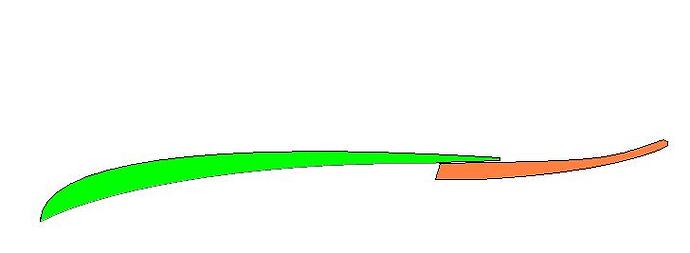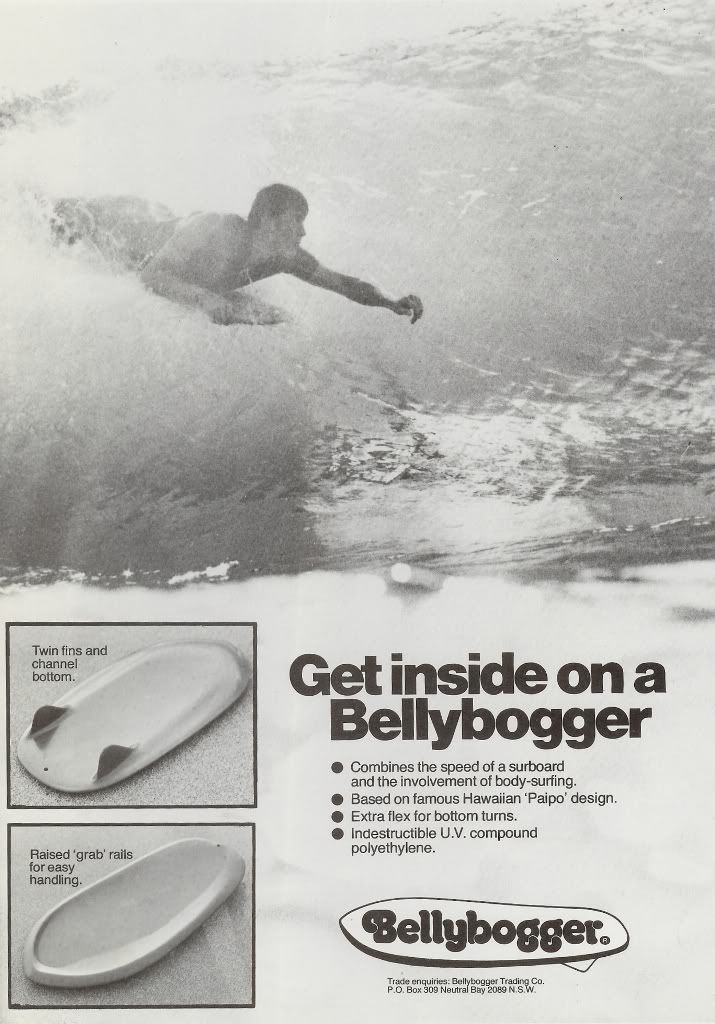Just a question about rocker, but it may only apply to paipo/bodyboards…
Lengthwise…Convex rocker keeps the nose up for safety and used further back, allows the board to roll forward and aft, but slows a board because water grips to a convex curve.
Flat rocker provides minimal grip due to curve but ‘flats’ still stick to water ( like 2 wet pieces of ply) And flat rockers provide a stiff ‘digital’ style of control.
So what characteristics does a con-cave rocker have if it is used in the mid to tail area ?
Maybe something like this might work for a paipo/BB ?
(side view)
I like it because it would give lift at the nose (on right) with a traditional convex curve.
However, when planing, the step, kinda like on the ol’ Aipa/MR Stingers, would reduce the wetted surface area right back towards the tail.
The tail , with its slight concave, presents a positively angle to the water so it would give lift in the tail too.
Ultimately I think it might give a lot of lift fore and aft, minimal grip averall and the lowest possible wetted surface area at speed.
Theres a lot of variables like width, angle of concave, but I think the overall concept might be worthy of a prototype or two ??
To that end , how about a 2 piece board ?
The curves are exaggerated to illustrate the physics, but you can see that the front curve provides lift and, at speed, the tail should lift as well.
I figure maybe make it in a 2 piece form so different nose and body pieces can be mixed / matched to test the variables curves from rail to rail, outline, thickness, etc…
And heres how it might look in a more refined incarnation. Possibly witha 5/8ths thick nose section and a 2in body piece. Whatever, its just a theory at the moment.
Ive just focussed on the lengthwise rocker to get a basis for discussion and then I will certainly do a few tweaks and mods based on the suggestions later on.
What do you think ?
SF.










